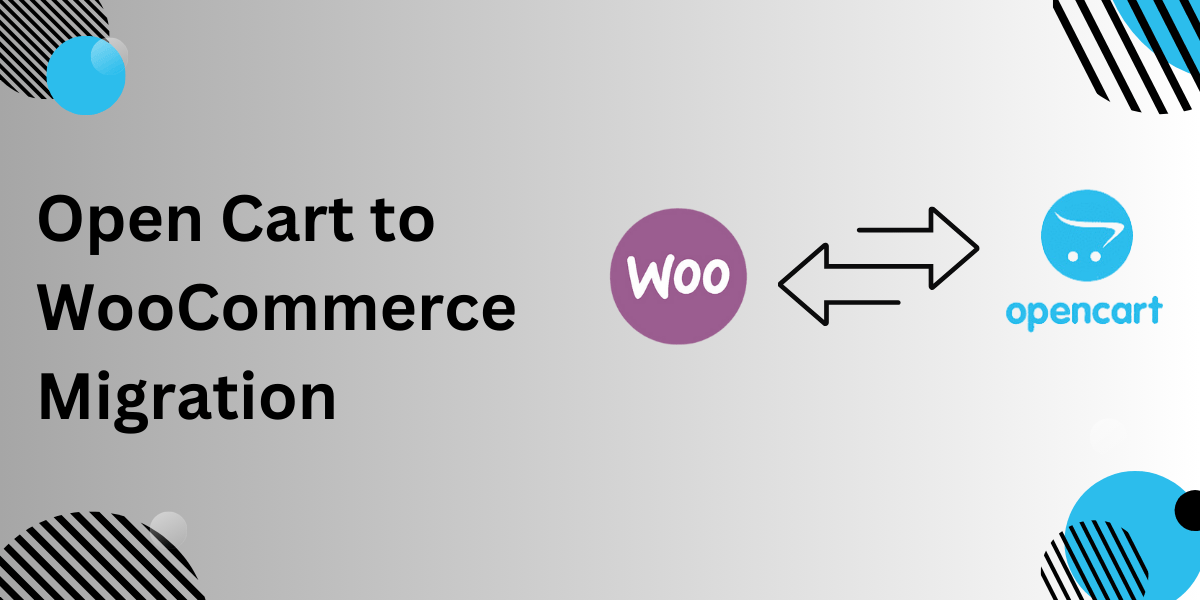Migrating from OpenCart to WooCommerce can feel like a daunting task, but it can unlock a range of opportunities for your online store. With WooCommerce’s flexibility and an expanding list of plugins, it’s becoming the go-to choice for businesses. In this guide, we’ll look at why migrating from OpenCart makes sense, and how the process can be executed smoothly, along with a real-world example to make things clearer.
Why Consider OpenCart to WooCommerce migration?
If you’re still running your eCommerce store on OpenCart, you may have faced some of its limitations: fewer plugins, less customizable features, and sometimes difficulty scaling as your business grows. WooCommerce, on the other hand, is built on WordPress, which allows you to tap into an enormous pool of themes, plugins, and customization options. The switch to WooCommerce offers:
- Better Customization: WooCommerce offers more flexibility to design a unique store.
- Strong SEO Features: With WordPress integration, you gain powerful SEO tools that help your business rank better.
- Wider Plugin Library: WooCommerce has a large variety of free and premium plugins for almost every business need.
Benefits of WooCommerce for Growing Businesses
WooCommerce is open-source, which means it’s highly customizable and scalable. Here’s why many businesses choose to migrate:
- Unlimited Products: WooCommerce allows you to list an unlimited number of products.
- Scalable: Easily adapt to business growth with new plugins and tools.
- Better User Experience: WooCommerce themes and tools offer a more seamless shopping experience for your customers.
Migration Process: Breaking it Down
While switching platforms sounds complicated, breaking the process into smaller, manageable steps can make the transition much smoother. Here’s a brief roadmap:
- Backup Data from OpenCart: Before starting the migration, ensure that all data, including products, customers, and orders, are securely backed up.
- Choose a Reliable Migration Plugin: For example, you could use a plugin like the “OpenCart to WooCommerce Migration Tool.” It simplifies the transfer process, ensuring that your data moves safely.
- Test the WooCommerce Store: Before going live, test every aspect of the WooCommerce store to make sure it’s functioning smoothly.
- Finalize & Launch: Once tested, you can officially switch to WooCommerce.
Real-World Case Study: MapleStore’s Migration Journey
MapleStore, a fictional electronics eCommerce brand, had been using OpenCart for several years. As their business grew, they needed more flexible options, including better SEO tools, enhanced product listings, and a wider range of payment gateways. MapleStore was finding it harder to manage their large inventory and customers with OpenCart’s limited resources.
After weighing their options, they decided to migrate to WooCommerce. By using a migration plugin, the switch took less than a week. Post-migration, they saw a 25% increase in sales due to better user experience and improved SEO rankings. Additionally, their team was able to add new features quickly by installing relevant WooCommerce plugins, which wasn’t as easy with OpenCart.
Common Challenges and How to Avoid Them
While the migration process can be straightforward, there are common issues that can arise:
- Data Loss: Always back up your data to avoid losing customer information or product listings.
- Downtime: Schedule the migration during off-peak hours to minimize disruption.
- Plugin Compatibility: Make sure the plugins you used in OpenCart have WooCommerce alternatives.
Final Thoughts
Switching from OpenCart to WooCommerce offers tremendous advantages for businesses aiming to scale and customize their eCommerce stores. From unlimited customization to powerful SEO tools, WooCommerce is a powerful platform to help businesses thrive. Ensure a smooth transition by choosing the right tools, backing up your data, and testing thoroughly before launching. If MapleStore could make a successful switch, your business can too!


